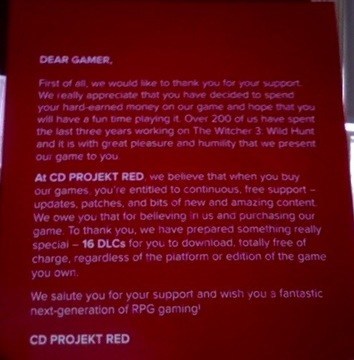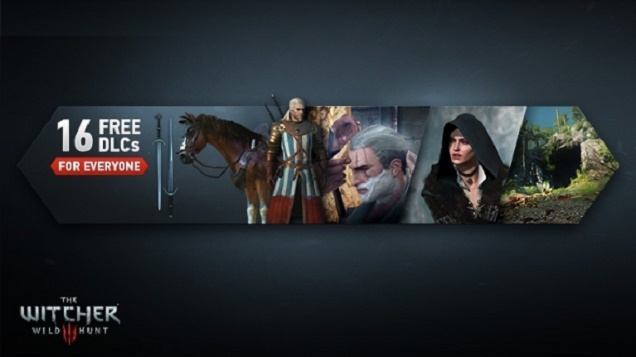With the recent announcement of the weekly releases of free DLC for The Witcher 3: Wild Hunt, the difficulty of defining what makes DLC successful and interesting has really become apparent.
CD Projekt RED’s sixteen downloadables are interesting and intriguing–not only because the DLC is free but also because of the tone of the release. Included with the actual copy of The Witcher 3 is a brief note, which specifically explains the sixteen free DLC packages. According to CD Projkect RED, they are releasing the free packages as a form of thanks to their fans for their support of their game. This level of gratitude for fans and customers is very commendable and indicates a level of appreciation of fans’ opinion in the creation of their game.

Something else that makes this weekly release of DLC special is that there is variety. The release involves not just a bunch of in-game currency for the players to use but also quests, alternative costumes, armor for Geralt or his horse and even visual customization. The diversity of the DLC–how each downloadble add-on subtly creates a small addition to the world of The Witcher–is both clever and interesting.
Considering DLC, there are two categories that separate them from each other: the story and the additional content DLC. Most of The Witcher 3’s free DLC would fall into the additional content zone as they provide small flourishes and details to the game itself. The expansions that will be coming to the Witcher 3 this fall and next year will likely be more of a Story DLC type.
These types of DLC are where the company makes its money. They usually cost more than additional content DLC and have story arcs and consequences that come with them. One form of Story DLC that clearly demonstrates the potential for this type of DLC to build a story and receive high reviews from fans and critics alike is BioWare’s “Lair of the Shadow Broker” for Mass Effect 2.
This DLC demonstrated a clever and masterful way of building upon the universe of Mass Effect through adding more worlds and missions to explore and allowing fan-favorite Liara to temporarily join the team–and all in a way that feels natural. That is probably the “make or break it” for a Story type DLC: if it feels natural and fluid with the story of the main game, if the content feels novel and yet familiar and if the experiences in the DLC leave an impact on the player, then does downloadable content really become worth the price of admission.
Of course that is not to say that a DLC cannot be considered good or decent if it does not follow these three requirements to a tee. Everyone has their own opinion about what a decent or good downloadable addition is, but universal agreement regarding additional content that is worth the asking price and play through usually has these three essentials checked off.
What do you think makes a DLC decent or even great? Leave a comment and let your voice be heard, and, as always, for all your deep game-related content, stay tuned to GameSkinny.







Published: Jun 4, 2015 05:27 pm